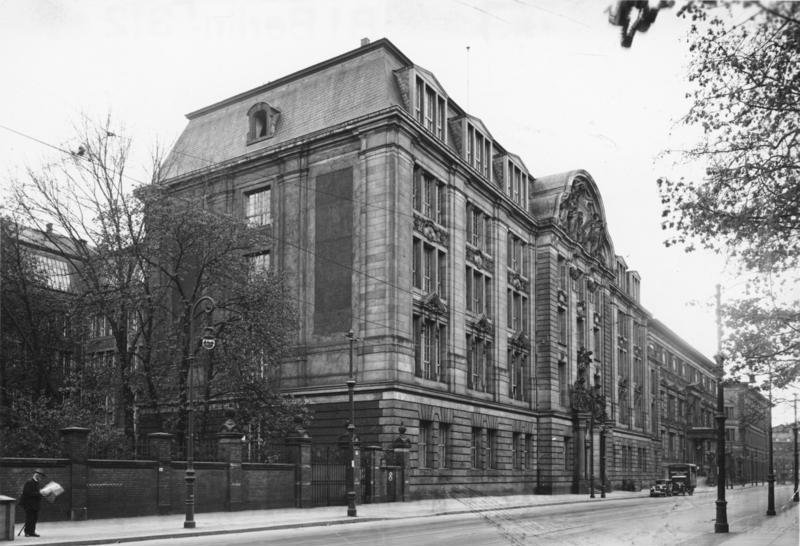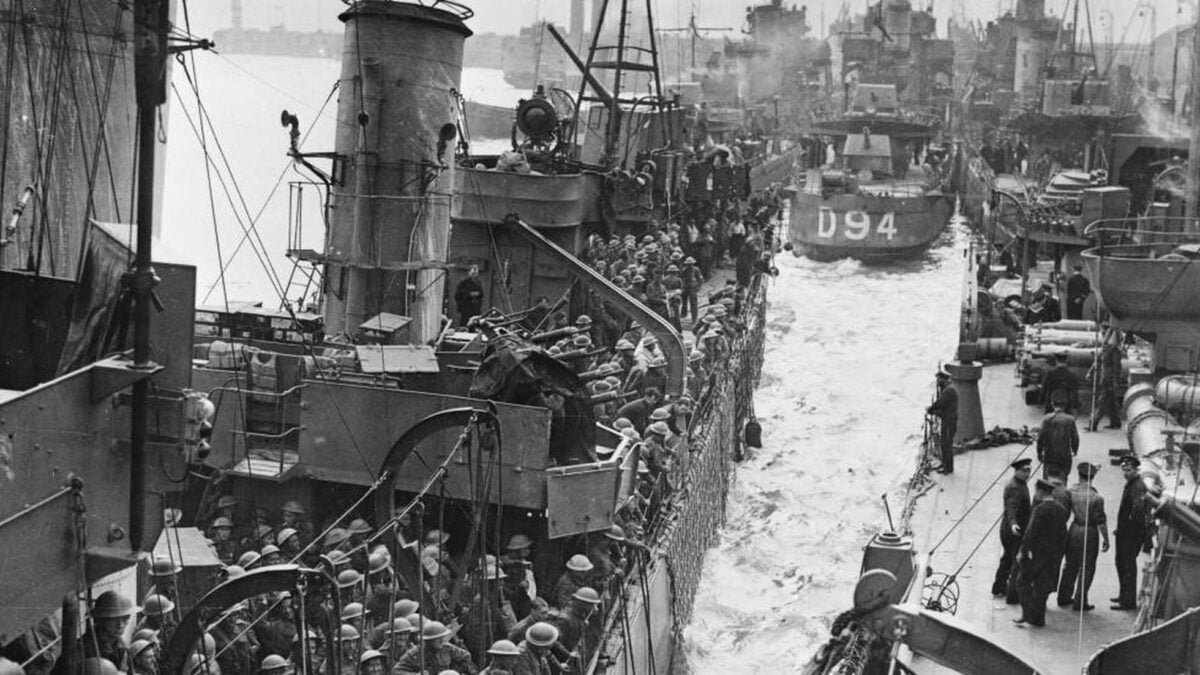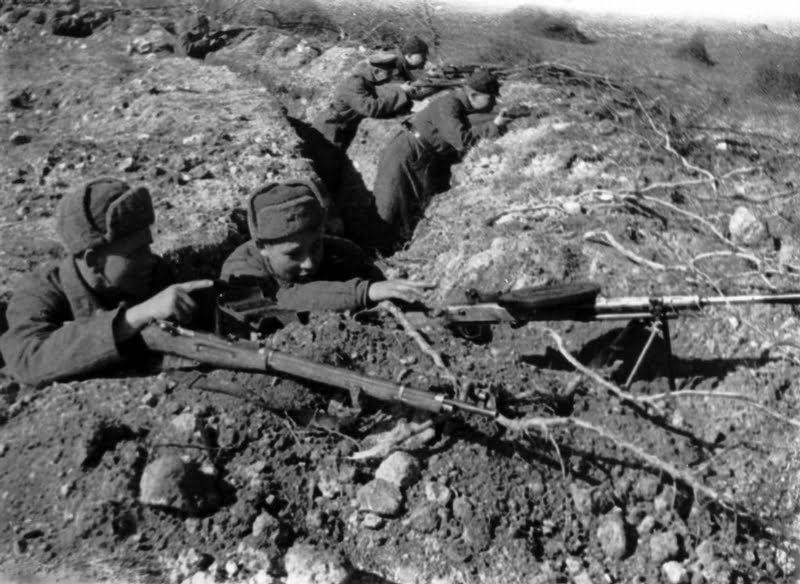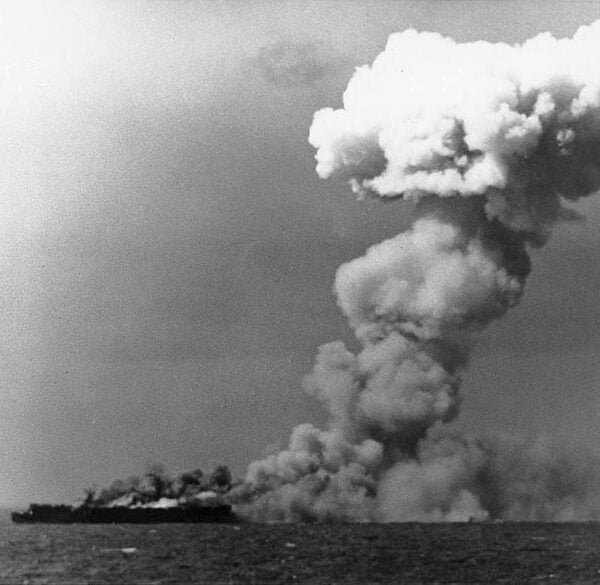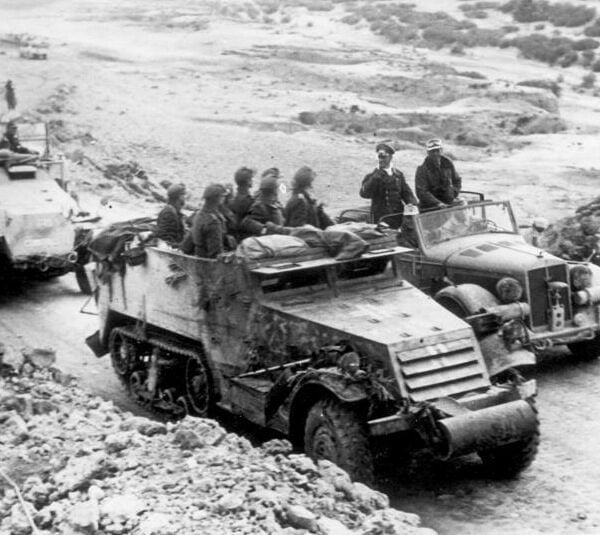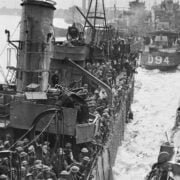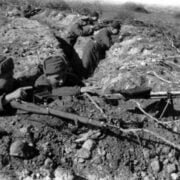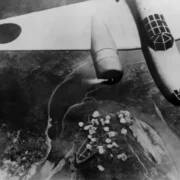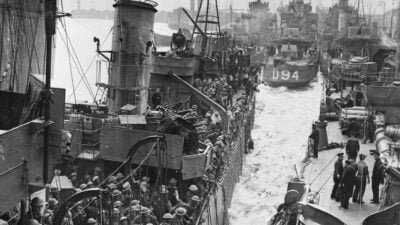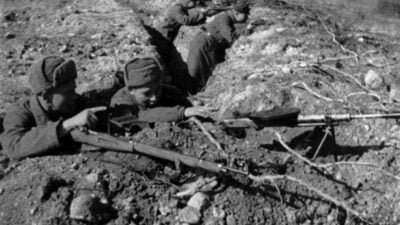The Battle of the River Plate, which occurred during World War II, was one of the first significant confrontations between British and German naval forces in the South Atlantic Theater of Operations. This naval battle, which took place in December 1939, had a substantial impact on the war and deserves recognition in military history.
Also check out: The Afrika Korps of Rommel: The Campaign in North Africa
The Beginning of the Hunt for the German Pocket Battleship
To fully understand the background that led to the Battle of the River Plate and the hunt for the German pocket battleship Admiral Graf Spee, it’s essential to explore the events and factors that shaped this significant naval conflict.
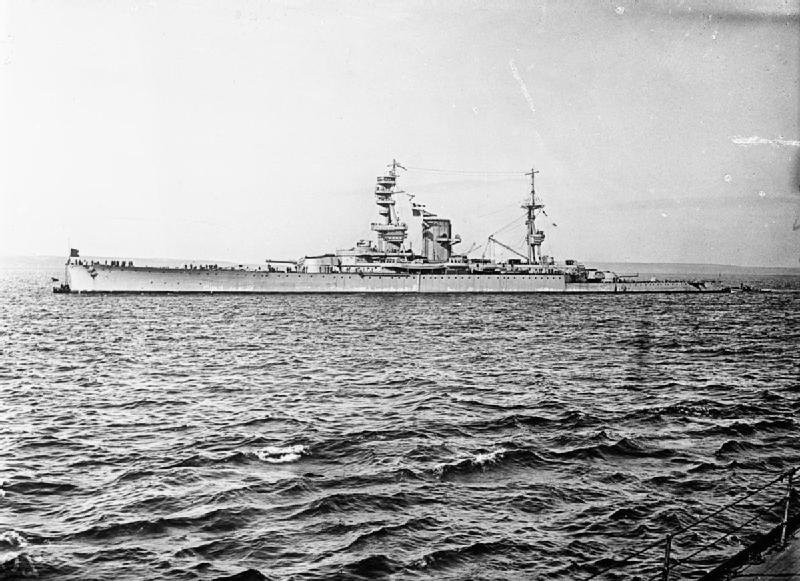

German Commerce War Strategy and the Admiral Graf Spee
The German strategy of commerce warfare, known as ‘aggressive submarine warfare’, focused on attacking the Allied commercial maritime routes to weaken their supply capabilities. Initially, German submarines, led by the formidable U-boats, were the main protagonists of this strategy. However, the German Navy also employed pocket battleships, like the Admiral Graf Spee, to cause additional havoc to Allied commerce.
The Admiral Graf Spee was commissioned in 1936 and entered service as a moderately sized surface warship equipped with powerful cannons. Its mission was to patrol the South Atlantic and disrupt Allied maritime transport, cutting off supply lines to Britain. This was a crucial part of the German strategy to economically pressure the Allies, aiming to weaken their ability to sustain the war effort.
Admiral Graf Spee’s Attacks in the South Atlantic
The battleship departed from Germany in early August 1939, before the official start of World War II in September that year. Onboard the ship was Captain Hans Langsdorff, who soon began implementing the mission to disrupt maritime routes in the South Atlantic. The German battleship attacked several British merchant ships, causing significant losses.
These initial attacks created panic and destruction in Allied maritime transport, laying the groundwork for the Allies’ response. The sunk merchant ships represented a significant loss of supplies and resources, while increasing the German threat in the South Atlantic, causing alarm and urgency among the Allies.
Allied Response and Deployment of Warships
The series of attacks in the South Atlantic alerted the Allies to the need for an immediate response. The loss of HMS Courageous, a British aircraft carrier sunk by a German submarine in September 1939, further exacerbated the situation. This served as a distressing reminder of the German capacity for attack, leading to an immediate reaction.
As part of this response, the British Royal Navy deployed warships to the South Atlantic, including HMS Exeter, HMS Ajax, and HMS Achilles. These ships would form the task force tasked with facing the Admiral Graf Spee in the Battle of the River Plate. The hunt for the German pocket battleship was about to enter a new phase, determining the fate of the Admiral Graf Spee and its influence in the South Atlantic Theater of Operations during World War II.
The Confrontation at the River Plate: Naval Battle and Strategy
The Battle of the River Plate was one of the first significant confrontations between British and German naval forces during World War II. The encounter had important ramifications in naval strategy and the development of the conflict.
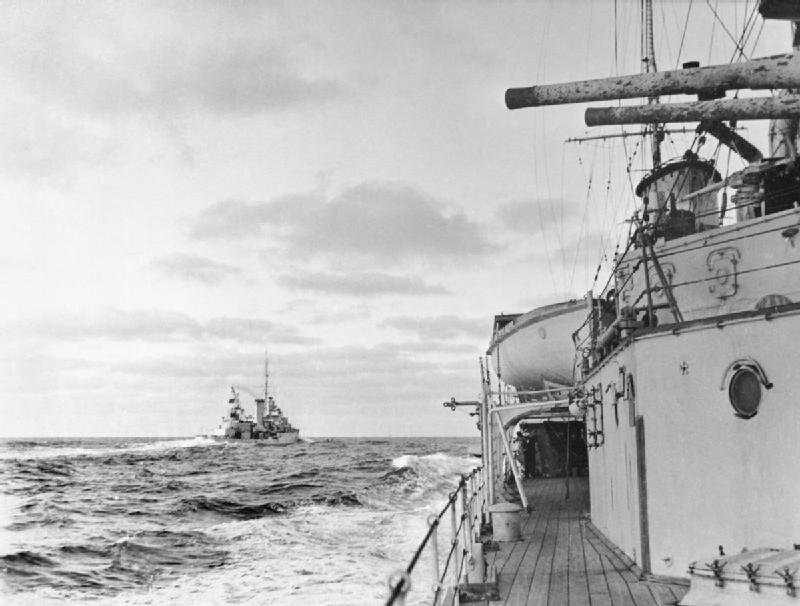

Naval Strategies and Tactics of the Battle of the River Plate Participants
The Battle of the River Plate involved different strategies and tactics employed by the participants. The Admiral Graf Spee, being a pocket battleship, had the advantage of speed and firepower compared to the British cruisers. However, the Royal Navy was determined to confront the German threat and coordinated their tactics effectively.
The battleship and the British cruisers used evasive maneuvers and smoke cover to try to minimize the damage caused by their opponents. The battle was characterized by long-range shootings, with the British trying to get close enough to cause significant damage to the German battleship. Tactical skill and the crews’ experience played a crucial role in the battle.
Damage and Consequences of the Battle of the River Plate
During the confrontation, the ship suffered significant damage to its superstructure and armaments, while HMS Exeter, one of the British cruisers, was also severely hit. However, the battle itself ended with the Admiral Graf Spee retreating to the neutral port of Montevideo, Uruguay, seeking urgent repairs.
The battle showed the British determination to confront the German pocket battleship, despite the initial disadvantage. Additionally, it emphasized the importance of effective shooting strategies and the resilience of warships. Bold actions from the crews, such as the attack of the HMS Exeter, played a crucial role in disrupting the battleship’s plans.
Retreat to Montevideo and Its Implications
After the Battle of the River Plate, the severely damaged Admiral Graf Spee retreated to the neutral port of Montevideo, Uruguay, for repairs. However, international laws of neutrality allowed the Uruguayan government to grant only a limited time for the repairs of the German battleship. This created a dilemma for Captain Langsdorff, the commander of the battleship.
The retreat to Montevideo led to intense diplomacy and political pressure from the British for Uruguay to deny Langsdorff the necessary time to repair his ship. This delicate situation laid the groundwork for the unexpected outcome when Langsdorff, fearing the imminent ambush of superior British forces, decided to scuttle the ship in the estuary of the River Plate on December 17, 1939. The sinking of the German battleship had significant political implications and led to subsequent debates about Langsdorff’s conduct and motivations.
The Scuttling Strategy of the Admiral Graf Spee
The surprising decision of Captain Hans Langsdorff to scuttle the battleship in the River Plate estuary on December 17, 1939, marked a significant turning point in the Battle of the River Plate. To gain a deeper understanding of the scuttling strategy of the German battleship, it’s essential to explore three relevant subtopics:
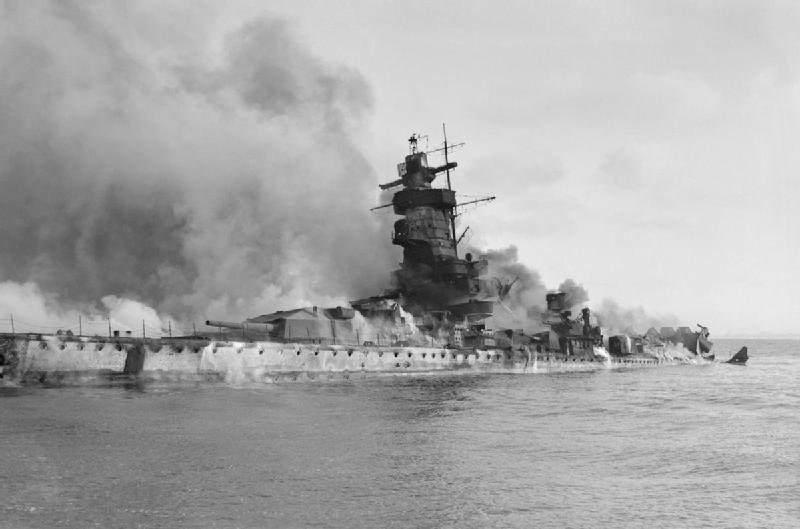

Political Pressures and Technical Limitations
After the Battle of the River Plate, the Admiral Graf Spee arrived at the neutral port of Montevideo, Uruguay, seeking repairs. The stay in the neutral port was a temporary option and subject to strict limitations, as established by international laws of neutrality. The Uruguayan government was under international pressure, mainly from Great Britain, to restrict the ship’s German stay in the port.
Captain Langsdorff faced a complex dilemma: he had a severely damaged ship and an exhausted crew, but he couldn’t guarantee the completion of the necessary repairs within the available time frame. Additionally, he believed that significantly superior British naval forces awaited him outside the port, ready to attack as soon as he attempted to depart.
The Decision to Scuttle the Admiral Graf Spee
Faced with the dilemma, Captain Langsdorff made the unexpected decision to scuttle the ship. His choice had various motivations. Firstly, he wanted to prevent his ship from falling into enemy hands, as he believed he couldn’t continue the fight effectively with a severely damaged ship. Additionally, Langsdorff was concerned about his crew’s condition and didn’t want to subject them to an unequal and potentially devastating confrontation with British forces.
The decision also had a moral dimension. He saw his action as a way to adhere to international neutrality rules and avoid confrontations within the neutral port. Moreover, it’s believed that Langsdorff avoided the loss of Uruguayan lives, as a confrontation in the port could cause collateral damage to local facilities and the population.
The Consequences of the Scuttling
The scuttling had immediate and lasting consequences. The British forces couldn’t capture the German battleship but gained valuable information from the analysis of the ship and its documentation. Additionally, the episode generated debates and controversies about the captain’s actions and motivations.
Langsdorff, after the scuttling, committed suicide, which further complicated the situation. While some saw him as an honorable officer who tried to adhere to international neutrality rules, others considered him a coward who avoided the final confrontation with British forces. Langsdorff’s action and its consequences were subjects of discussion and analysis at the time and continue to be studied in historical and ethical contexts to this day.
Consequences and Legacy of the Battle of the River Plate
The Battle of the River Plate had a series of immediate consequences and left a lasting legacy that influenced subsequent events in World War II and the international political and military scenario.
Impact on the South Atlantic Theater of Operations
The Battle of the River Plate had a direct impact on the South Atlantic Theater of Operations. The moral victory of the British, despite not resulting in the capture of the Admiral Graf Spee, demonstrated that the Royal Navy was willing to confront the German Navy even under challenging circumstances. This boosted the morale of the crews and showed the Allies’ capacity to resist German attacks in that theater.
Furthermore, the battleship’s retreat and subsequent scuttling weakened the German presence in the South Atlantic, alleviating pressure on Allied supply routes and contributing to the security of vital supply transport operations to Great Britain.
Political and Diplomatic Implications
The ship’s sinking and the subsequent death of Captain Langsdorff led to complex political and diplomatic issues. The Uruguayan government had to balance its neutrality with pressures from the British and the Germans. Langsdorff’s action of sinking his own ship in Uruguayan waters sparked debates about the captain’s conduct and motivations.
Moreover, the battle increased international attention on the neutrality of South American countries during World War II. This raised questions about compliance with international laws regarding the treatment of warships in neutral ports and the implications of such actions for the reputation of the involved countries.
Legacy of the Battle of the River Plate in Naval History and Military Ethics
The Battle of the River Plate left a significant legacy in naval history and military ethics. The unexpected outcome of the battle and Langsdorff’s subsequent action sparked debates about the compliance with duty and respect for international laws—issues that are still discussed today.
Additionally, the German commerce warfare strategy and the use of pocket battleships like the Admiral Graf Spee continued to influence the development of naval strategies throughout World War II. The lessons learned from the battle shaped military thinking and the importance of a quick and effective response in naval combat situations.
